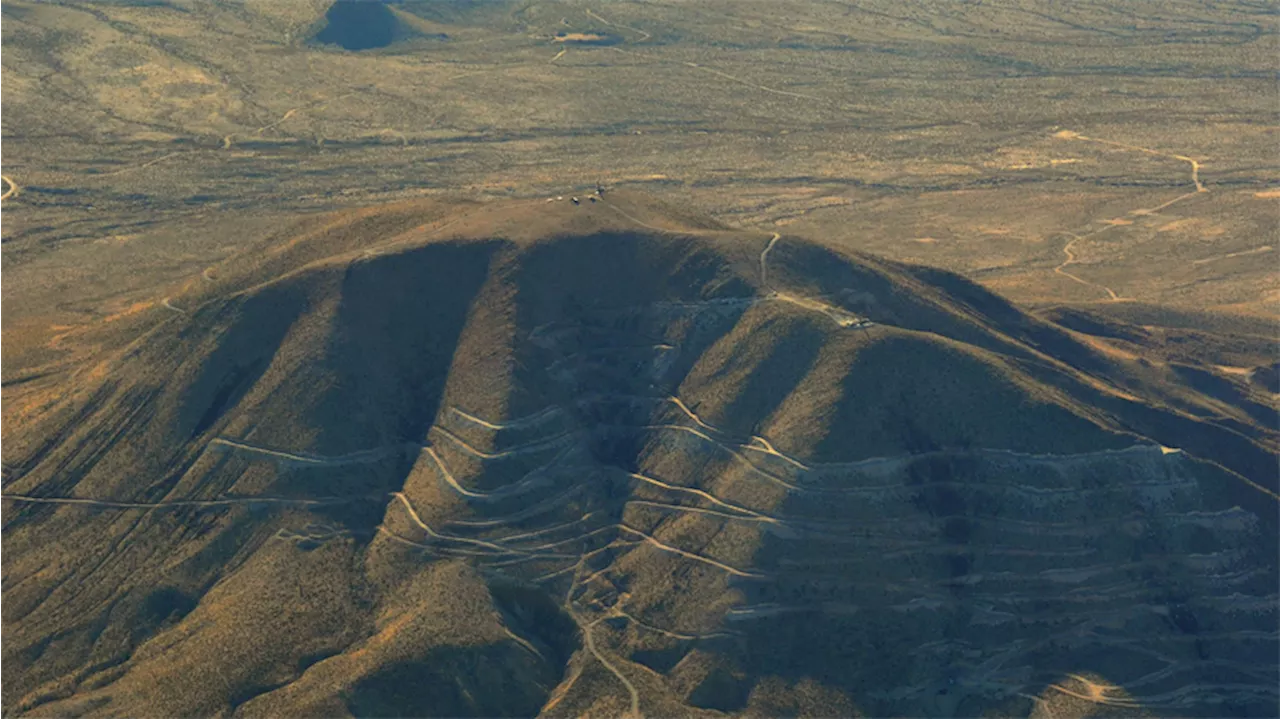Scientists have detected all five nucleobases, the building blocks of DNA and RNA, in samples returned from asteroid Bennu by NASA's OSIRIS-REx mission. This discovery supports the theory that asteroids played a crucial role in delivering the ingredients for life to Earth billions of years ago. The analysis of these pristine samples, handled under strict conditions to prevent contamination, revealed traces of complex organic molecules, including the five nitrogenous bases essential for genetic material. Researchers compared these findings with previous analyses of meteorites and asteroid Ryugu, highlighting the unique chemical composition of Bennu and its potential to shed light on the origins of life.
Scientists detected all five nucleobases -- building blocks of DNA and RNA -- in samples returned from asteroid Bennu by NASA 's OSIRIS-REx mission. Japan ese collaborators also detected all five nucleobases in these samples. Asteroids, small airless bodies within the inner Solar System, are theorized to have contributed water and chemical building blocks of life to Earth billions of years ago.
Although meteorites on Earth come from asteroids, the combination of exposure to moisture in the atmosphere and to an uncontrolled biosphere means that interpreting the data from them is challenging. Pristine samples collected from asteroids in space would be the ideal candidates, and successful sample collection missions have only been achieved by two countries: Japan (NASA's OSIRIS-REx mission returned 121.6 grams of sample from asteroid (101955) Bennu in September 2023 -- the largest sample ever returned to Earth. Now, an international team of OSIRIS-REx sample analysis team scientists, led by Dr. Daniel Glavin and Dr. Jason Dworkin at the NASA Goddard Space Flight Center, has reported the discovery of ammonia and nitrogen-rich soluble organic matter in these samples. The findings were published in the journal. Among the findings, the Japanese contributors detected all five nitrogenous bases, molecules required for building DNA and RNA, supporting the theory that asteroids could have brought the building blocks of life to Earth. The Bennu samples from NASA were handled under nitrogen to prevent contamination by Earth's atmosphere. A 17.75 mg sample was processed and analyzed for N-heterocycles -- organic molecules with a ring structure containing carbon and nitrogen -- using high-resolution mass spectrometry at Kyushu University. The analysis was carried out by a research team, whose members are part of the OSIRIS-REx sample analysis team, consisting of Associate Professor Yasuhiro Oba of Hokkaido University, Principal Researcher Yoshinori Takano of JAMSTEC and Keio University, Dr. Toshiki Koga of JAMSTEC, Professor Hiroshi Naraoka of Kyushu University, and Associate Professor Yoshihiro Furukawa of Tohoku University. The analysis revealed that the concentration of N-heterocycles is approximately 5 nmol/g, 5-10 times higher than that reported from Ryugu. In addition to the five nitrogenous bases -- adenine, guanine, cytosine, thymine and uracil -- required for building DNA and RNA, the researchers also found xanthine, hypoxanthine, and nicotinic acid (vitamin B3). In previous research, uracil and nicotinic acid were detected in the samples from asteroid Ryugu, but the other four nucleobases were absent. The difference in abundance and complexity of N-heterocycles between Bennu and Ryugu could reflect the differences in the environment to which these asteroids have been exposed in space, explains Koga. Samples from the meteorites Murchison and Orgueil were also processed and analyzed previously under identical conditions for comparison. The research team observed that the ratio of purines (adenine and guanine) to pyrimidines (cytosine, thymine and uracil) was much lower in the Bennu samples compared to both Murchison and Orgueil. 'There are multiple possible reasons for this observed difference,' says Oba. 'They may be due to differences in parent bodies or formation pathways, or the Bennu asteroid was exposed to a cold molecular cloud environment where pyrimidine formation is more likely to occur.' 'Our findings, which contribute to the larger picture painted by all the authors of the paper, indicate that nucleobase chemistry in the Bennu samples must be further studied,' concluded Naraoka. Another important result of this study is that, by comparing meteorites with Bennu samples, a reference for the reanalysis of other meteorites in collections across the globe has been created.
Bennu Asteroid DNA RNA Nucleobases Life Origins OSIRIS-Rex NASA Japan Meteorites Organic Matter
United States Latest News, United States Headlines
Similar News:You can also read news stories similar to this one that we have collected from other news sources.
 Textbooks need to be rewritten: RNA, not DNA, is the main cause of acute sunburnSunburn has traditionally been attributed to UV-induced DNA damage. However, a new study reveals that RNA, another vital cellular molecule, plays a major role in triggering acute sunburn reactions.
Textbooks need to be rewritten: RNA, not DNA, is the main cause of acute sunburnSunburn has traditionally been attributed to UV-induced DNA damage. However, a new study reveals that RNA, another vital cellular molecule, plays a major role in triggering acute sunburn reactions.
Read more »
 Alien: Earth Teaser Unveils Xenomorph Crash Towards EarthFX's new 'Alien' series, 'Alien: Earth', premieres on Hulu this summer, promising a terrifying continuation of the sci-fi horror franchise. A teaser reveals a xenomorph crash landing a spaceship on Earth, setting the stage for a desperate fight for survival.
Alien: Earth Teaser Unveils Xenomorph Crash Towards EarthFX's new 'Alien' series, 'Alien: Earth', premieres on Hulu this summer, promising a terrifying continuation of the sci-fi horror franchise. A teaser reveals a xenomorph crash landing a spaceship on Earth, setting the stage for a desperate fight for survival.
Read more »
Canada Rare Earth Secures 70% Stake in Laos Rare Earth RefineryCanada Rare Earth announced it has signed a Memorandum of Understanding with a Laotian company to purchase 70% of a fully permitted rare earth refinery. The refinery, with a capacity of 3,000 tonnes per year, was built 12 years ago but has remained idle due to policy changes. The Lao government is now supporting the refinery's operation and encouraging in-country processing of rare earth concentrates. The refinery is expected to be operational in Q4 2025 after minor refurbishments.
Read more »
 Canada Rare Earth to Acquire 70% Stake in Laos Rare Earth RefineryCanada Rare Earth (TSX.V: LL) has signed a memorandum of understanding to purchase 70% of a fully permitted rare earth refinery in Laos. The refinery, with a production capacity of 3,000 tonnes per year, is expected to be operational by Q4 2025 after modest refurbishments. The company aims to secure offtake agreements and investment to support the refinery's operation and ensure a stable supply of key rare earth oxides.
Canada Rare Earth to Acquire 70% Stake in Laos Rare Earth RefineryCanada Rare Earth (TSX.V: LL) has signed a memorandum of understanding to purchase 70% of a fully permitted rare earth refinery in Laos. The refinery, with a production capacity of 3,000 tonnes per year, is expected to be operational by Q4 2025 after modest refurbishments. The company aims to secure offtake agreements and investment to support the refinery's operation and ensure a stable supply of key rare earth oxides.
Read more »
 USA Rare Earth Achieves Breakthrough in Domestic Rare Earth ProductionUSA Rare Earth successfully produces high-purity dysprosium oxide from its Texas Round Top deposit, marking a significant advancement in domestic rare earth production.
USA Rare Earth Achieves Breakthrough in Domestic Rare Earth ProductionUSA Rare Earth successfully produces high-purity dysprosium oxide from its Texas Round Top deposit, marking a significant advancement in domestic rare earth production.
Read more »
 Can DNA-nanoparticle motors get up to speed with motor proteins?DNA-nanoparticle motors are exactly as they sound: tiny artificial motors that use the structures of DNA and RNA to propel motion by enzymatic RNA degradation. Essentially, chemical energy is converted into mechanical motion by biasing the Brownian motion. The DNA-nanoparticle motor uses the 'burnt-bridge' Brownian ratchet mechanism.
Can DNA-nanoparticle motors get up to speed with motor proteins?DNA-nanoparticle motors are exactly as they sound: tiny artificial motors that use the structures of DNA and RNA to propel motion by enzymatic RNA degradation. Essentially, chemical energy is converted into mechanical motion by biasing the Brownian motion. The DNA-nanoparticle motor uses the 'burnt-bridge' Brownian ratchet mechanism.
Read more »
